How to stay safe when foraging.
Posted on 26th February 2021
By Phil Leng
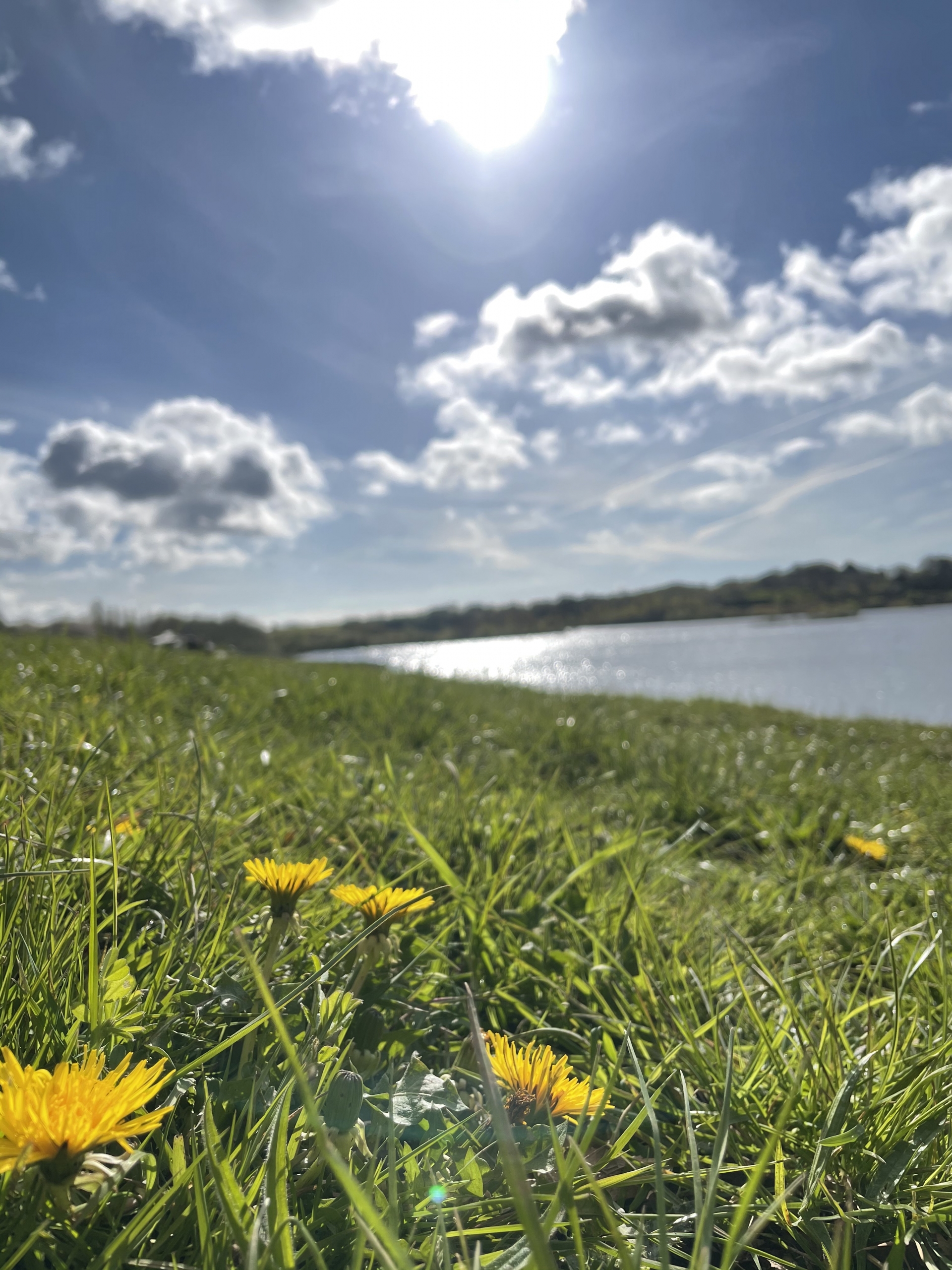
We have probably all had worried looks from friends and family when you announce you are going foraging – visions of psychedelic mushrooms and stinging plants, will you survive or fall victim to some unknown fungi? In this article we take a look at what are the risks when out foraging and how to do it safely. Most of them are just those that are associated with being out in the countryside, but some are more foraging specific.
Weather – where to go and be prepared
There is a saying that there is no such thing as bad weather, just inappropriate clothing. Weather plays a part in foraging safely even before you choose your clothes, and that is in deciding where to go, or even to go at all. Check for weather warnings, high winds – stay clear of big trees, flooding, stay away from rivers or low lying ground, heavy snow, probably not the best time to go into the mountains. Sometimes it is best just to stay home and go out another day. Once you have decided on a safe location dress appropriately. If it is going to rain take waterproofs, layer up and carry spare layers, hypothermia is a real risk on cold days. If it is going to be hot and sunny take a hat, suncream, and carry and drink plenty of fluids.
Pick in nice places
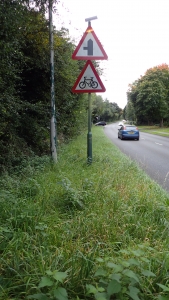
Busy roads are not good foraging places
One of the benefits of foraging is getting out to beautiful unspoilt places – and these are usually free from pollution. Pollution is however present close to roads, and some mushroom families concentrate heavy metals so try to forage away from busy roads, 10m or more is good, or get a hedge or fence between you and the road. If foraging near water try to find out if you have any potential sources of pollution nearby, especially after heavy rain, sewage works, factories or housing estates can all overflow into water courses. Pollution can be old, mines, spoil tips, and factory sites can all have high levels of contaminants such as heavy metals and chemicals in the soil. Farmland can be hazardous when pesticides are being or have just been sprayed onto fields. If plants adjacent to fields, track or roads look ill, then suspect herbicides and steer clear. If you are foraging in an urban environment It is best to forage from a number of places so that you aren’t at undue risk from any unseen pollutants on old industrial sites (a good general principal if you are eating a lot of foraged food).
Dog urine is something we always get asked about, and common sense prevails here. The obvious tree in the pub car park isn’t a good foraging spot for anything below great dane wee height, nor is the 1st tree on the local dog walk. However, we all pick and eat blackberries straight from the bush or eat strawberries in the garden without washing them first. These are exposed to any number of animals from mice to foxes, frogs, hedgehogs (if you are lucky) and birds and we suffer no ill effects. If we are picking enough things for a meal then washing them is best practice. Many mushrooms soak up water when washed so a wipe to remove any obvious dirt is best, but we tend to cook them so that is another barrier against biological contamination.
Communications
Take a charged phone, especially if you are on your own, but be aware many of those ‘nice places’ don’t have a phone signal and tell someone where you are going and when you expect to be back.
Only eat what you can identify as safe
First up, before you put anything in your mouth, know what it is! Sounds simple and obvious but it is essential you don’t eat things because you think they might be edible, or they look good, or smell good. The common waterside plant Hemlock water dropwort looks like parsley, smells good, and could kill you. Yellow stainer mushrooms look very similar to field mushrooms but will give you a night to remember for all the wrong reasons. There are no shortcuts such as ‘if an animal has eaten it, will be safe’, or ‘poisonous mushrooms turn silver black’. These sayings are not true and are not a substitute for knowing what you are eating.
Identify what you have. Many people can recognise blackberries, they can distinguish them from other black fruit (and there are deadly black fruit) by their shape, structure, colour, leaves and thorns. The same goes for other foraged foods. Some are easier, the ones we concentrate on in our courses – for instance hedgehog mushrooms are a delicacy, and the only mushrooms growing out of the ground with spines underneath, to more difficult ones such as the blusher, another edible mushroom that needs careful study to distinguish it from its poisonous lookalike the panther cap. We all know about stinging nettles, but make time to recognise giant hogweed, not a plant to touch.
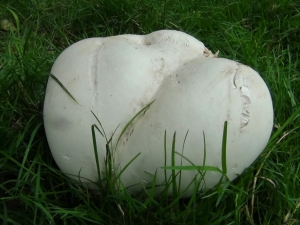
Giant Puffball, the easiest mushroom to ID in the UK
Getting the knowledge can be through books like our foraging guide or by going on courses such as those that we run across the country. Through these you can learn what groups of plants or mushrooms are good – sometimes you only need to identify something as in a group to know if it is edible, for instance once you have identified something as in the onion family then you know it is edible, or sometimes you have to be more specific such as with the Agaricus species of mushrooms, identify the group then make sure you haven’t got one of the poisonous ones, or other times you need to identify what you have to a species level, like with the Parasol mushroom. Take note of the poisonous lookalikes.
Nothing is worth breaking a leg for!
When you are out be aware of steep slopes, cliffs, loose rocks. If there is a great mushroom on that steep slope above a drop, odds on there is
more nearby where you aren’t at risk of an injury. Likewise trees, pick what you can without climbing the tree, come prepared with a long handled picker or use a stick. A few extra fruit are not worth breaking bones for! Even whilst on level ground be aware of your surroundings. Deep ruts, branches, and leg grabbing brambles on the ground cause far more hospital trips than poisonings. Footwear with ankle support is good practice in the woodss
Water is another major hazard. 223 people drowned in the UK in 2019. Stay out of the water, river banks are often steep, slippery, unstable
and covered in vegetation hiding their true nature. Look around for some easy way to access the plants you want preferably at the edge of very shallow water where you don’t have to go in. If there isn’t easy access then look somewhere else.
Livestock and dogs
Before you enter a field, look for livestock – any bulls, any animals you might not be comfortable with? If so go somewhere else. Cows are generally docile but inquisitive animals, but don’t get between a mother and calf. If you have a dog be extremely careful around cows. We don’t allow dogs on walks where we might encounter cows. Generally keep your dog on a lead around livestock but if you are feeling threatened by cows then let the dog off the lead and the cows will chase it rather than you.
Children
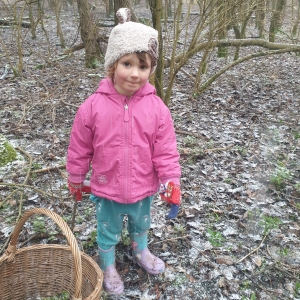
Well wrapped up for a winter adventure
Children love foraging, it’s an adventure, but not without its risks. Make sure your child knows not to put anything in their mouth that hasn’t been approved by an adult. If they are too young to understand that then they will need to be supervised at all times. Likewise be aware of the hazards around them, high places, water, thorns and stinging plants (they can touch any mushroom without fear of harm).
Fitness
Foraging and improving fitness can go together, making walks more interesting, however do be aware of your own personal fitness level and match it to your planned forage. Likewise collecting a huge bag of fruit is no use if you can’t carry it or it is going to do you an injury trying to lift it.
Don’t get lost
If you are going deep into large woods then consider taking some sort of location device, be that your phone with a mapping app (Google maps or OS maps are excellent) or GPS, or a map and compass. Woods are hard to navigate in, and once it gets dark then even harder and intimidating. If you haven’t got some way of locating yourself then stay close to paths. The emergency services have been called out to lost foragers in UK woods.
Biohazards!
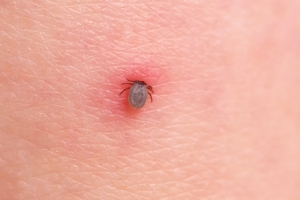
If you have been bitten by a tick this is likely what you will see
A grand name for diseases, but yes we have biohazards in the UK that we need to think about when we go foraging or into the countryside in general.
- Lyme disease. This is carried by blood sucking ticks that live on mammals (usually deer). They
Lyme disease – NHS (www.nhs.uk)
- Toxiplasmosis. This is a concern for those who are or are trying to get pregnant and those with a weakened immune system. This is the reason why those people shouldn’t get involved with cat faeces i.e cat litter, soil in gardens or places where cats may have defecated. This disease can also infect pregnant sheep and goats so people in the at risk categories shouldn’t eat raw things from areas containing pregnant or lambing sheep. See here for the NHS advice:
Toxoplasmosis – NHS (www.nhs.uk)
- Tetanus/Lock jaw. Vaccination against this has been in place in the UK since 1961 and there were only 4 cases in the UK last year. Bacteria in the soil can enter the body through a wound. If you attend hospital with a cut or burn you may be offered a tetanus booster if your vaccinations are not up to date.
- Liver Flukes/Fascioliasis. This is the reason why we cook all wild water plants and don’t eat them raw. The liver fluke is a worm like creature called a trematode, that has a complex life cycle involving plants in water and living in mammalian livers. An infection with liver flukes is can lead to a severe disease called Fascioliasis. This can be treated with medicine to kill the flukes. Normally an issue for livestock however humans can get it too, so cook all plants that have been in contact with rivers, streams or lakes.
- Weil’s disease/Leptospirosis. Another waterborne disease, this time carried by rats. This disease is mostly an issue for freshwater sailors who may inadvertently swallow water during a dunking! If you are going to drink wild water from a source that is likely to have rats around, filter it and boil it. For more information see here:
Leptospirosis (Weil’s disease) – NHS (www.nhs.uk)
So it looks like a lot of things to consider but in reality it is mostly the common sense that we all use when going out into the countryside with a bit of foraging knowhow. Enjoy your foraging and stay safe.
